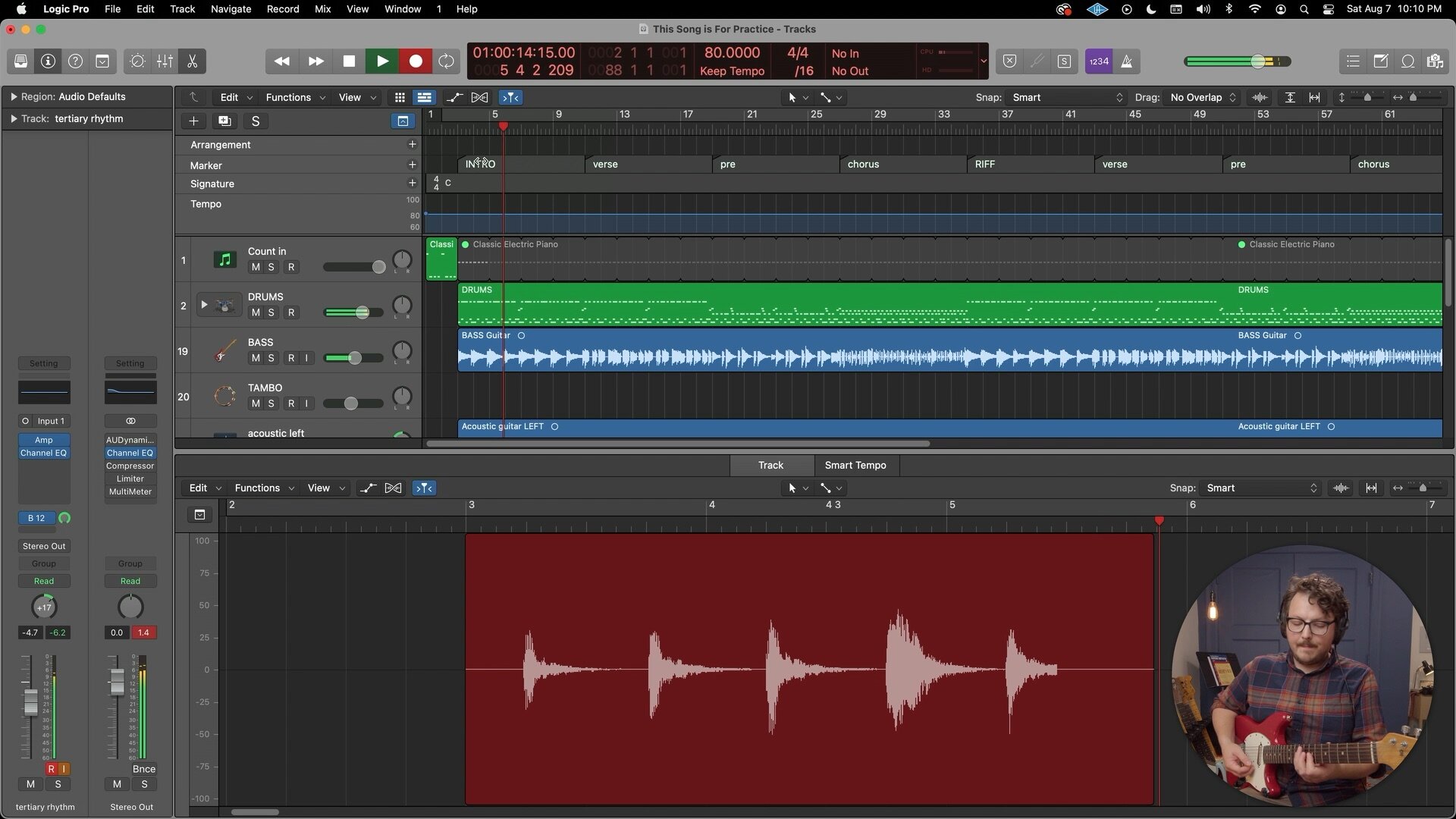Office Hours, Q&A
Question 1: Jeff was curious about mixing major and minor scales when soloing. I talked a bit about how the blues approach and made a little jam track. I've attached a five minute version of the A A D E jam track I used. Just remember the A Minor pentatonic goes over the IV chord - the D Major chord.
Question 2: Mathais was curious about Ear Training. I'm working on a series, but in the meantime check out this thread, about Rapid Fire key guessing. Use the songs people have already figured out to see if it sounds right to you, then try your own songs. This post also has some links to ear training practice and songs. This is another interesting thread about ear training.
Question 3: Dennis had some questions about playing guitar with a strap, standing up. I had quite a few thoughts about it.
Question 4: Andy had some technique questions regarding pinky use. I also gave some general practice pointers to help with speed and comfort.
Question 5: Tim had a question about when and how to use sus and add chords. I spent some time on it but in the process I realized I would have to do a longer set of lessons about the subject. So Tim, look out for some detailed lessons about the subject.
Question 6: Davin had questions about the song "About a Girl" by Nirvana. Why do the chords work the way they do? I didn't give solid answers, but I did give some context and history and discussed a few ways to think about this song!
Question 7: MJ was curious about how singing and playing guitar works. I gave some specifics and some ways to start practicing using your voice with your guitar. We also touched on some common misconceptions about perfect pitch.
Question 8: Wayne was curious about loop pedals. I compare software vs loop pedal pros and cons, etc.
Read More



















